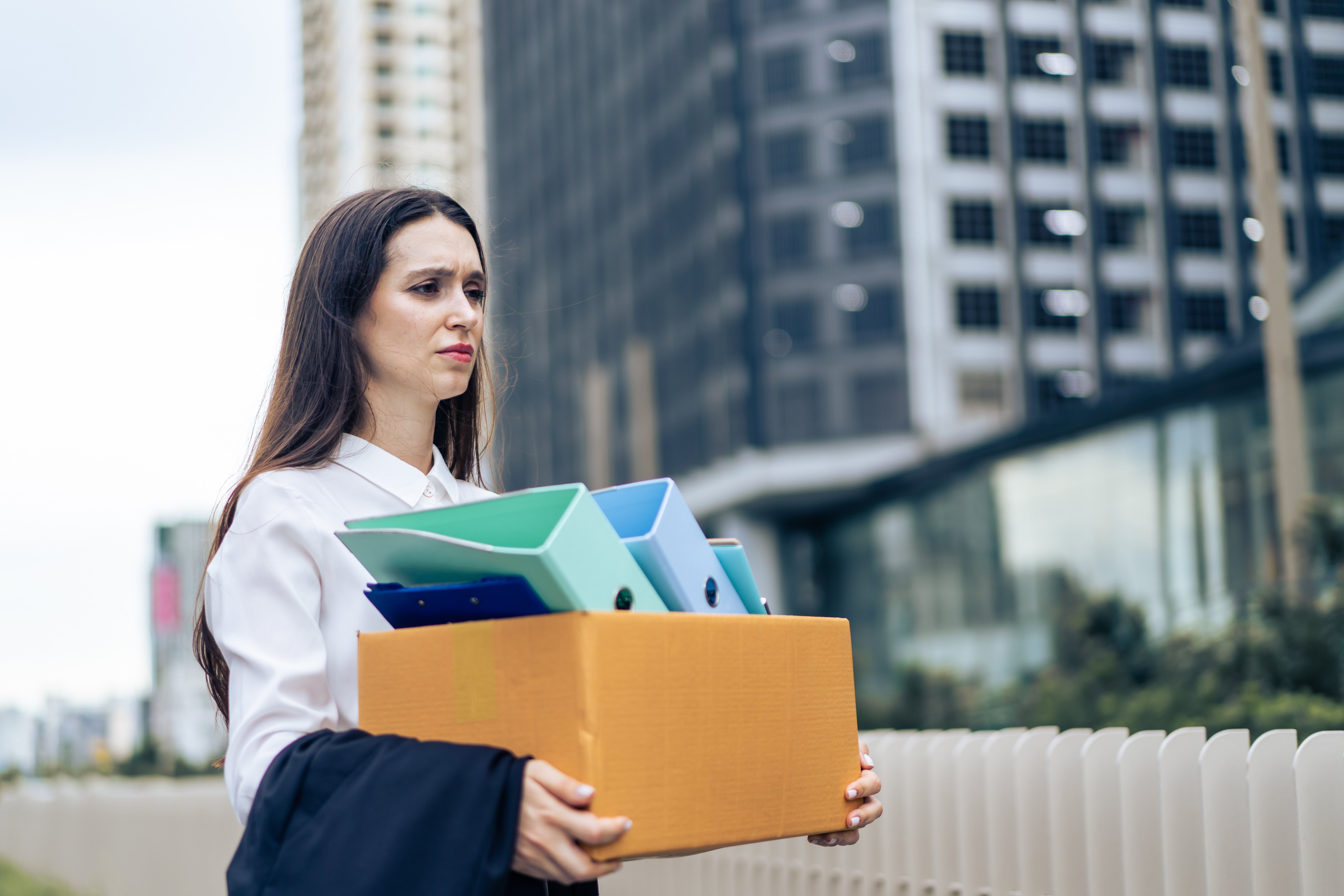It is not unusual for college tuition to cost $30,000 or more a year. Some students are able to pay for it with savings or get grants or scholarships. However, many have to turn to student loans to finance at least some or all of their costs. Taking out student loans can pay off in the long run because having a college degree usually makes it easier to get well-paying jobs. However, if you borrowed a hefty chunk of change, repaying your loans may seem like a daunting task. Student loans payments can rival those of a mortgage, and most graduates aren’t bringing in $300,000 a year at their first job. However, there is no need to change your name and flee the country; it is completely possible to repay your student loans and avoid default, even if you are facing economic hardship.
What types of student loans do you have?
Knowing what types of student loans you have is very helpful, as it can affect repayment options. One important distinction is whether the loan is public (meaning the government is either the lender or guarantor of the funds) or private. There are three major federal student loan programs: the William D. Ford Federal Direct Loan Program, Federal Family Education Loan (FFEL) Program, and Federal Perkins Loan Program. The Direct Loan and FFEL Programs both offer Stafford and PLUS loans.
The Stafford loan is the most common type of student loan and can be either subsidized or unsubsidized. If your loan is subsidized, the government pays your interest while you are in school or a period of deferment. If your loan is unsubsidized, you are responsible for the interest as soon as the funds are disbursed – while you are in school or deferment, you can choose to either pay the interest as it accrues or have it added to the loan balance (capitalized). PLUS loans are made to parents and graduate students and are always unsubsidized. Perkins loans are always subsidized.
Private loans are made by lenders with no government involvement. They are generally not subsidized. While federal student loan holders have many options available to them under the law, such as alterative repayment plans and deferment (discussed more below), private lenders are not required to offer these options.
What if you do not remember what types of loans you have? Look for your loan documents – you or your parents should have them somewhere. Also, you can call your lenders and ask. You can access information about federal student loans from the National Student Loan Data System (contact information is on located at the conclusion of this article).
When do you have to start paying your student loans?
In general, you do not have to repay your student loans while you are in school (as long as you are enrolled at least half-time). For Stafford loans, your first payment is normally due six months after graduating. For Perkins loans, you are given nine months. For PLUS loans, the borrower is given the option of starting repayment either within 60 days after the funds are disbursed or waiting until six months after the student has graduated or dropped beneath half-time enrollment. (The grace period is only 45 days after leaving school for graduate students.) If you have private student loans, you should talk to your lender about when you have to start repaying them.
Who should you pay?
Student loans, like mortgages, are often sold by the loan originator on the secondary market. To further confuse matters, lenders sometimes hire a servicer – a third party who collects the payments. If you fell behind with your payments, it is possible that your loan was sent to a collection agency or, for federal student loans, your state’s guarantee agency or the Department of Education. Whenever a loan is sold or payment collection duties are transferred, you should be notified. If you are not sure who to pay, check your mail to see if you received a notice. You can also check your credit report or call the original lender. As discussed above, if you have federal student loans, you can find out where they are by checking the National Student Loan Data System (although be aware that information may only be updated periodically).
Repayment plans
For Direct and FFEL loans, there are several repayment options available:
- Standard repayment plan This is the default plan borrowers are put on when you start making payments. You pay a fixed monthly amount for ten years (or less if the amount you borrowed was small). The monthly payment is the highest under this plan.
- Graduated repayment plan Payments can start out as low as half of what the standard plan offers (but never below the interest amount) and are typically increased every two years. If you owe enough, you can combine this plan with the extended repayment plan. Otherwise, the loan must still be paid off in 10 years (for loans that entered repayment on or after July 1, 2006), meaning that the later payments will be higher than under the standard plan. This plan may be appropriate for you if your income is low now, but you expect it to increase significantly in the future.
- Extended repayment plan This plan allows you to stretch the length of your repayment period to up to 25 years, which lowers your payment. You must owe at least $30,000 to use this plan.
- Income-contingent repayment plan (for Direct loans only, excluding parent PLUS loans) Income and family size are taken into consideration when determining your monthly payment for this plan. For those with limited income, the monthly payment can be very low, even less than the interest charges. The repayment period can last longer than 10 years, and any loan balance remaining after 25 years of payment is canceled.
- Income-sensitive repayment plan (for FFEL loans only) Like with the income-contingent repayment plan, your monthly payment is based on your income. However, the payment must cover at least the interest, and the repayment period is limited to ten years, so later payments will be higher.
- Income-based repayment plan (not available for parent PLUS loans) In order to qualify, you must have a certain level of student loan debt relative to your income and family size. Borrowers may be able to get a lower payment with the income-based repayment plan than the income-contingent or income-sensitive repayment plan. The monthly payment amount can be less than the interest charges, and any loan balance remaining after 25 years is canceled (10 years for Direct loans if you have a public service job). For FFEL loans, you have a right to switch your repayment plan once a year (lenders can allow more frequent switching at their discretion). For Direct loans, you can switch plans as often as you want. For FFEL and Direct loans, the standard repayment period for Perkins loans is 10 years or less. Alternative repayment plans are not available, but schools can extend the repayment period for low-income borrowers and those facing prolonged illness or unemployment. Alternative repayment plans may also not be offered for private loans, but if you are struggling, you can talk to your lender about the possibility of restructuring your loan.
Consolidation
Consolidation is the combining of existing loans into one new loan. You can consolidate all, some, or just one of your student loans. (However, in general, you cannot consolidate a consolidation loan by itself.) You may be able to get a lower payment by consolidating your loans. You do not have to be current with payments to consolidate – in fact, many delinquent borrowers use consolidation to get back on track. You cannot combine your private loans with your federal loans into a federal consolidation loan. You can consolidate your federal loans and private loans with a private consolidation loan, but this is not recommended, as you lose the rights granted to federal loans, such as deferment and alternative repayment plans.
Cancellation/Forgiveness
The circumstances in which a federal student loan may be canceled in full include the death or permanent disability of the borrower or attendance at a school where you were either falsely certified or the school closed before you could complete the program (and you don’t complete a comparable program at another school). Some federal loans are eligible for full or partial forgiveness if you are a member in a uniformed service, teach or provide services to needy populations, work in a health care profession or law enforcement, or participate in a government volunteer program. Check with your school, lender, or employer for details about cancellation.
Student loans are extremely difficult to discharge in a Chapter 7 bankruptcy. You must prove that repayment would cause you undue hardship. You may include student loans in a Chapter 13 repayment plan. They must be repaid in full, but collections actions, such as wage garnishment, cease the moment you file.
If you can’t pay
If you find yourself unable to pay your federal student loans, you may be able to get relief with a deferment or forbearance. A deferment is a temporary suspension of payments. If your loans are subsidized, the interest will be suspended; if not, interest will continue to accrue. Deferments are only permitted under certain circumstances, including enrollment as at least a half-time student, temporary total disability, enrollment in a graduate fellowship program, unemployment or other economic hardship, active duty in the armed forces, or participation in a rehabilitation program for the disabled. Forbearance is similar to deferment, only interest continues to accrue regardless of whether your loans are subsidized. (Forbearance can also involve a temporary acceptance of smaller payments.) Forbearances are granted for such reasons as a high monthly payment relative to your income, medical hardship or other unforeseen problems. If you have subsidized loans, obviously a deferment is preferable, but a forbearance is generally easier to obtain. Some private lenders may offer forbearances, but they are not required to do so.
A loan is considered in default if you don’t arrange a deferment or forbearance and are more than 270 days past due. The consequences of default are severe and can include aggressive collection tactics, tax refund interception, lawsuits, and non-judicial garnishment of up to 15% of your net wages. You will also be ineligible for deferments, alternative repayment plans, grants, and new student loans. Collection fees, which can be significant, will be added to your balance. Additionally, a default notation will appear on your credit report, and since there is no statute of limitations on student loans, the negative impact may follow you indefinitely if you continue to not pay. For federal student loans, you have a one-time right to get out of default with a “reasonable and affordable payment plan”. If they want you to pay an amount you feel you cannot afford, be persistent in pushing for an amount that you are comfortable with – it may be helpful to send them a copy of your spending plan. Once you make nine on-time payments (for Direct and FFEL loans you are permitted to miss one payment; for Perkin loans you are not) your loan is rehabilitated, i.e., taken out of default.
Resources
National Student Loan Data System
Allows you to look up information about your loans
800.433.3243
www.nslds.ed.gov
Federal Student Aid Office
Gives information on loan repayment, forgiveness, deferral
and forbearance.
800.433.3243
www.studentaid.ed.gov
National Consumer Law Center’s Student Loan
Borrower Assistance Project
Lays out repayment options for borrowers.
www.studentloanborrowerassistance.org
© BALANCE
To best evaluate where your money is going, consider creating a spending plan. Hanscom Federal Credit Union published the Money Management Planner, which is free to download. It includes worksheets and tips to help you create a money strategy to meet your financial goals.
Others are reading:
Understanding Different Types of Student Loans
Student Loans are Crushing Young Adults
New College Student? 4 Ways to Ace Your Finances This Fall














Comment